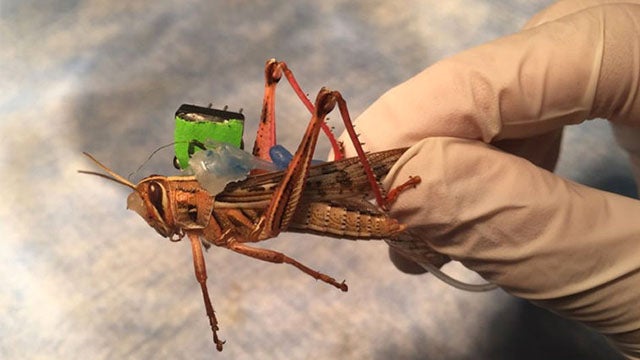Why is the Navy paying to engineer hordes of tattooed robot locusts?

New and exciting technological advancements are common in our modern era, but this might be one of the strangest.
Scientists at the School of Engineering and Applied Science at Washington University are developing technology to allow locusts to ‘sniff out’ explosives.
Why? As Associate Professor of Biomedical Engineering at the university, Baranidharan Raman, explained to the BBC, locusts have “robotic noses” – meaning they have an advance ability to pick up odours in the atmosphere.
Professor Raman has been allowed to continue his research thanks to a $750,000 (£565,000) grant from the Office of Naval Research in the US.
The insects will be fitted with all manner of technology as part of the project, which will allow the researchers to take advantage of their ability to pinpoint particular smells and train them to identify dangerous chemicals.
Related: iPhone 7
A chip will be implanted into the insects’ brains that will allow researchers to decode neural activity, while heat generating ‘tattoos’ will also be applied to the locusts’ wings.
When heated by a laser, these plasmonic wing enhancements will allow the locusts to be controlled via remote control, which means they can be steered towards particular locations, i.e. where there are suspected explosives, or other dangerous chemicals.
As Raman told the BBC: “It took only a few hundred milliseconds for the locust’s brain to begin tracking a novel odour introduced in its surroundings. The locusts are processing chemical cues in an extremely rapid fashion.
“Even the state-of-the-art miniaturised chemical-sensing devices have a handful of sensors. On the other hand, if you look at the insect antennae, where their chemical sensors are located, there are several hundreds of thousands of sensors and of a variety of types.”
So when can we expect to see these cybernetically enhanced locusts deployed? Professor Raman says they could be ready for testing in a year, and fully ready for use in less than two years.
Header image credit
VIDEO: Catch up on all the latest tech news with The Refresh
What do you think of the project to bring cyborg locusts into existence? Let us know in the comments.

